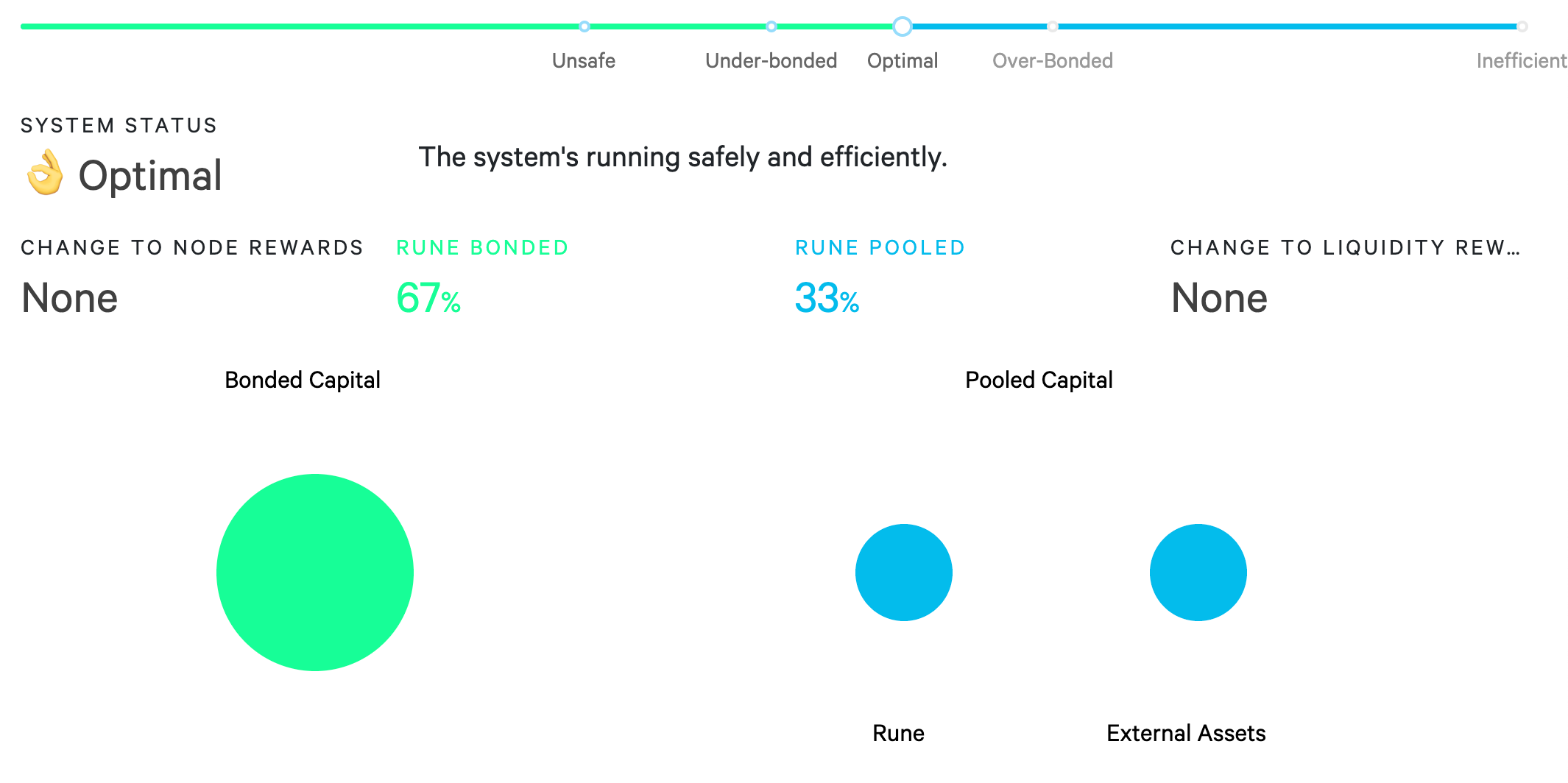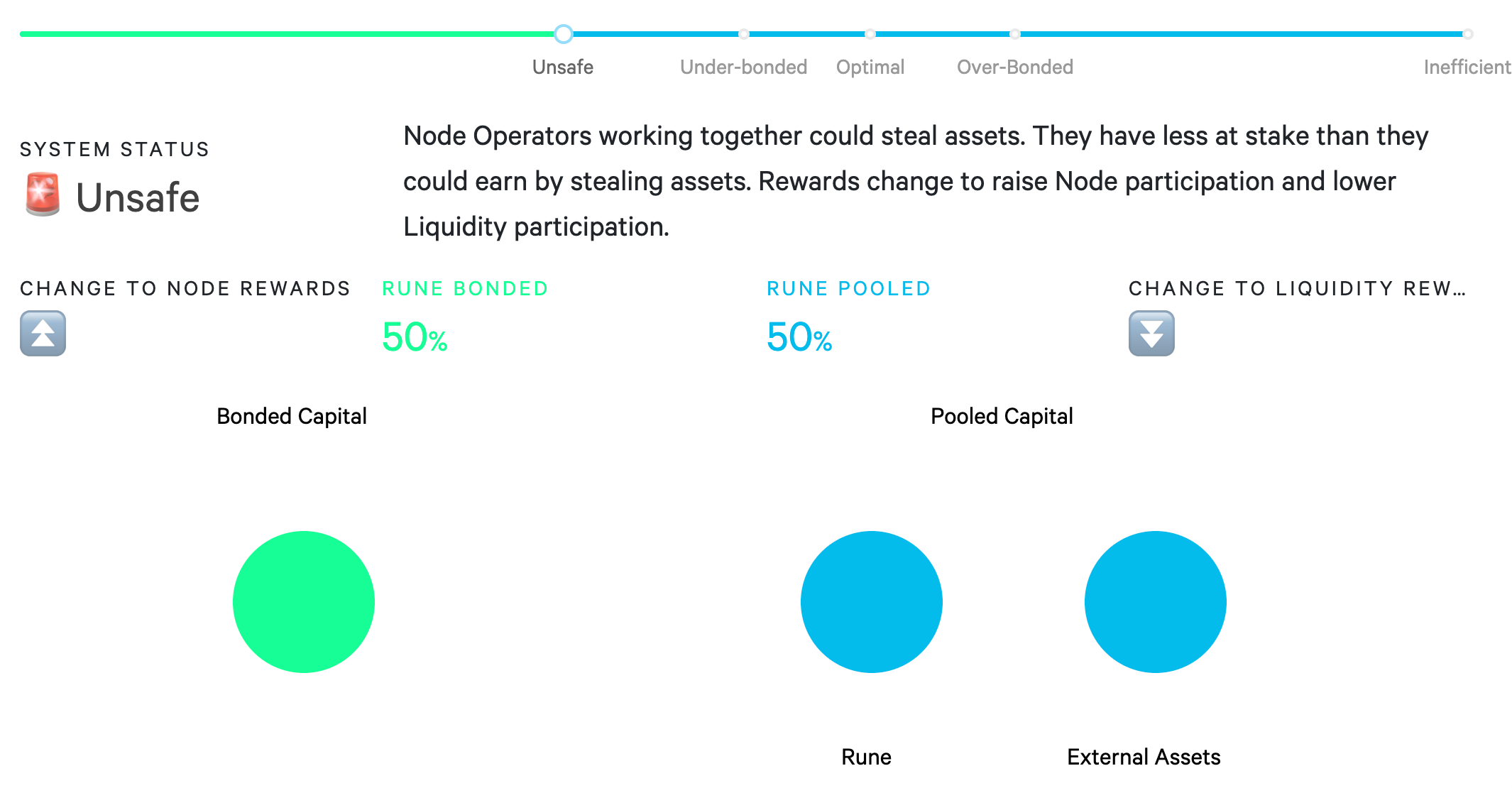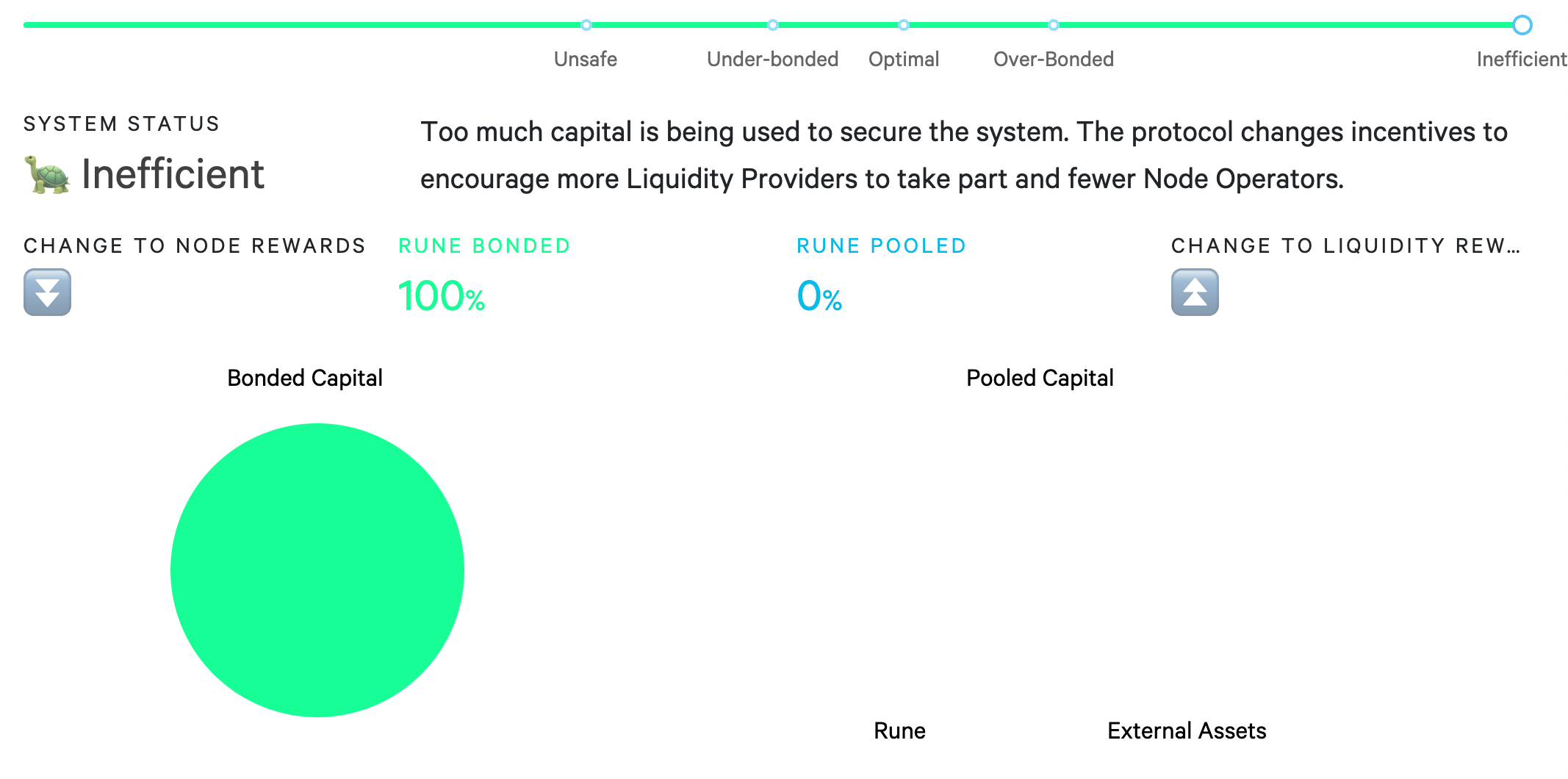Explainer
THORChain can be in 1 of 5 main states—
- 🚨 Unsafe
- Under-Bonded
- 👌 Optimal
- Over-Bonded
- 🐢 Inefficient
These different states can be seen in the relationship between Bonded Rune and Pooled Rune. That means the amount of Rune which has been bonded by Node Operators, and the amount which has been added to liquidity pools by Liquidity Providers.
Let’s start with the Optimal state. In this case, Bonded Capital is roughly equal to Pooled Capital. You can see this here because the Pooled Rune circle plus Pooled External Assets circle is about the same size as the Bonded Capital circle. Another way to say this is that Bonded Capital is at 67% and Pooled Rune is at 33%. THORChain’s chugging along well, so the system makes no changes to the incentives for Node Operators or Liquidity Providers.

The system may become Unsafe. In this case, Pooled Capital would be higher than Bonded Capital. Another way to see this is that Pooled Rune is equal to Bonded Rune – a 50/50 split. This is a problem because it means that it’s become profitable for Node Operators to work together to steal assets. In this case the system responds by increasing the amount of rewards going to Node Operators, and lowers the amount of rewards going to Liquidity Providers. This leads to more Node Operators getting involved, bonding more Rune and increasing Bonded Capital. And it means that Liquidity Providers are put off because they receive less return on their investment, pulling assets out and reducing the amount of Pooled Capital. With time, balance is restored and the system moves back towards the Optimal state.

The system might also become Inefficient. In this case Pooled Capital would be much lower than Bonded Capital. This is a problem because it means that much more capital is being put into securing pooled assets than those assets are actually worth. To remedy this, the system increases rewards for Liquidity Providers and decreases rewards for Node Operators. This leads to more Liquidity Providers being attracted to the system, and fewer Node Operators. Liquidity Providers add more capital to receive more rewards, increasing Pooled Capital. Some Node Operators remove their bonded Rune, looking for more profitable places to put their capital, and Bonded Capital falls. In this way, the system returns to the Optimal state.

The Under- and Over-Bonded states are less sever intermediary states. Being Under-Bonded is not a threat in itself because it is not yet profitable for Node Operators to steal. Similarly, being Over-Bonded is not a problem in itself because the system is still operating quite well.
It’s worth noting that the THORChain team does not expect the Unsafe or Inefficient states to come up often. In fact they think the system will mostly be in the Over-Bonded state, particularly as it gets easier for people to run nodes.

 Node Operator
Node Operator  Liquidity Provider
Liquidity Provider 